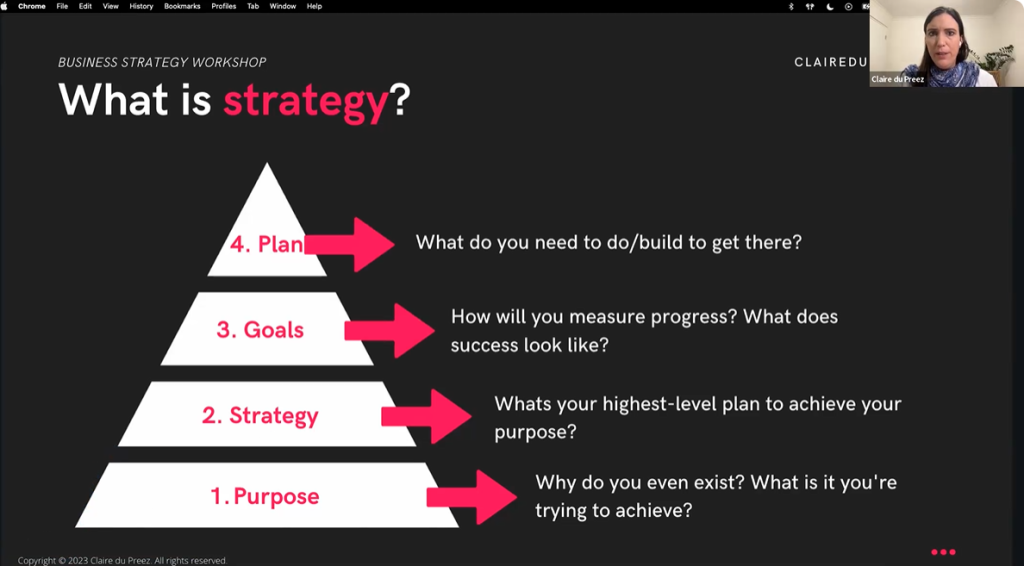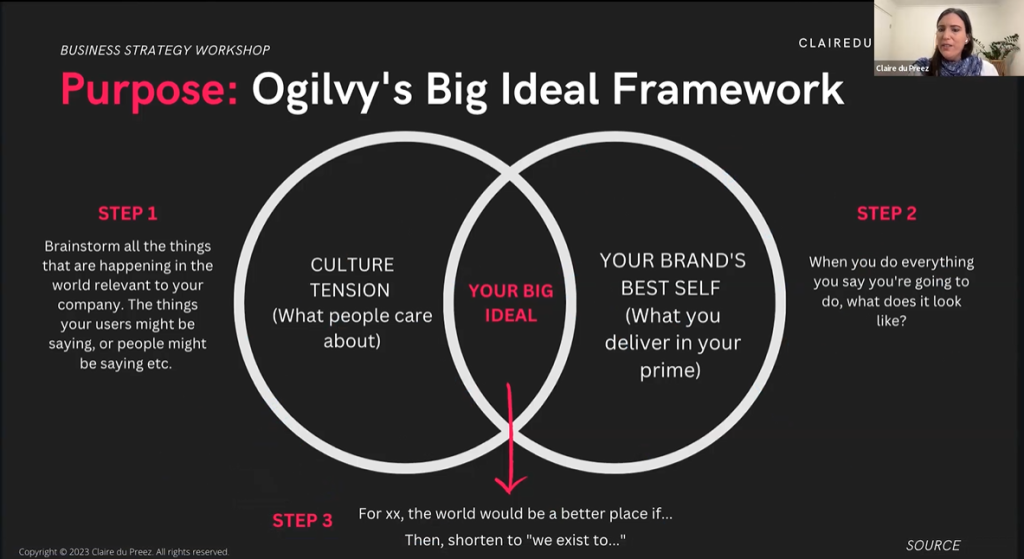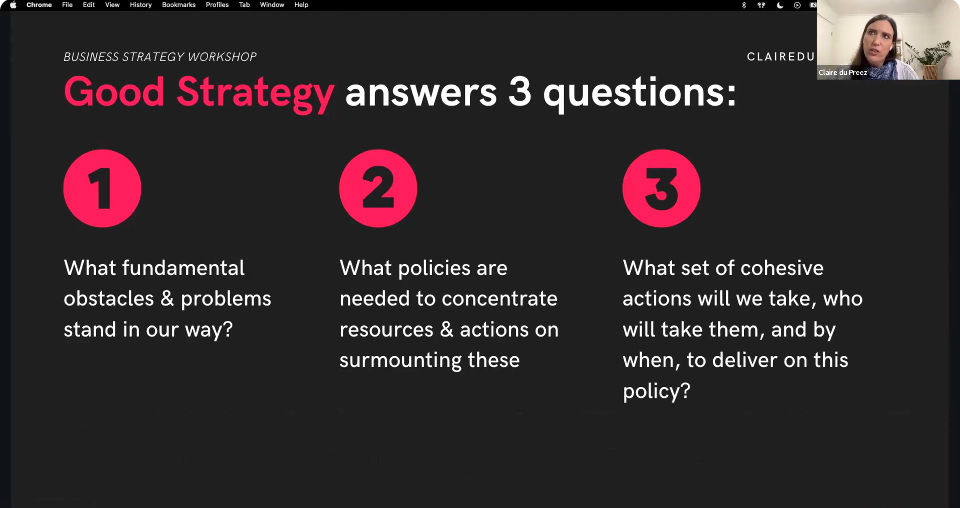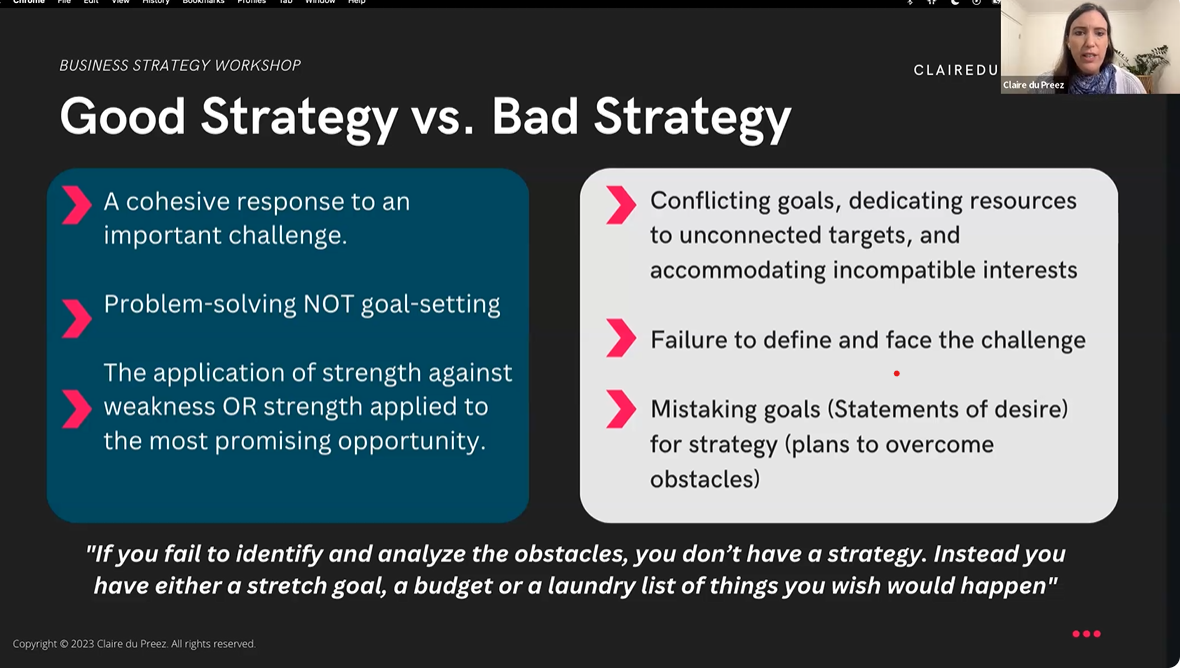Seasoned marketing and strategy coach, Claire du Preez, was the trainer for a virtual ‘Business Strategy for start-ups” workshop hosted by SAMIP, sharing tools and specialist expertise, having been part of a start-up journey that achieved a billion-rand exit.
According to du Preez, one of the biggest reasons businesses fail or fail to grow is lack of strategy. Though a clear strategy is vital for navigating the competitive business landscape, she believes that it needn’t be a 10-page document, but advocates for keeping it as simple as possible, even advising companies to abandon their vision and mission statement documents – no one wants to remember three versions.
While a one-page strategic plan can suffice – and a workbook with useful templates and resources was provided, du Preez cautioned that clarifying strategy does take time and is something that can’t be rushed. Ideally businesses should revisit strategy regularly, at least at monthly or quarterly intervals, so you can assess what you set out to do, how you are doing and whether you are still on the right track; often we are so busy we make false assumptions and can potentially drive our business in the wrong direction.

So what is strategy? Simply put, strategy answers how you’ll get your business into a stronger position than it is today. It is a plan to reach an objective and the right strategy can elevate you to an entirely new sustainable level of revenue.
Start with purpose
According to du Preez, the essential starting point is to clarify your purpose – why you do what you do – as this is the foundation of your strategy.
A good purpose can be used as a north start for decision making and helps to rally your internal team. Clarity of thought on your purpose will make people interested in what you have to say, make them root for you and impress potential investors.
Your purpose should be formulated into a single, succinct statement, a well-articulated reason for being, set on a 10-year horizon. Typically, it starts with “We exist to…”, for instance, the New York Times states as its purpose, “We exist to seek the truth and help people understand the world.”

Du Preez outlined Ogilvy’s Big Ideal Framework, a powerful exercise that the online participants worked through in breakout rooms. It is based on the premise that a brand draws from ideals not initiatives and involves identifying a cultural tension, insight or pain point that people care about within your space or that is relevant for your brand. Step 2 involves thinking about what your business delivers in its best version of itself, the area of overlap is the big ideal. Rephrase this in the format “the world would be a better place if’…then reduce this to … “We exist to…”
Who are you for?
Successful strategy requires you to continuously sense-check the assumptions you have about your key customers – you should be doing this every six to twelve months. Du Preez emphasizes that if you have paying customers, understanding them can be your best source of strategic direction. You should be deliberately exclusionary – don’t try to attract everyone, focus in on the segment of your customer base that is most interested and engaged – this is who you want to multiply and hone in on.
Another powerful exercise advised by the trainer is to conduct customer interviews to access insights. Du Preez suggests you identify ten best fit customers or impassioned users of your product, ask for 30 minutes of their time and have a structured conversation to understand their needs, wants and desires. This will help you understand their desired outcomes and the struggles they are trying to resolve which would give you insights that you can put into your strategy.

Using insights from Richard Rumelt’s book Good Strategy Bad Strategy, Du Preez stressed that good strategy is problem-solving not goal-setting – we are looking to identify the challenges or obstacles in our future and then design routes to bypass or transcend them. She outlined the Strategy Kernel Framework and guided attendees through the exercise in breakout rooms.
“If you fail to identify and analyze the obstacles, you don’t have a strategy. Instead you have either a stretch goal, a budget or a laundry list of things you wish would happen.” – Richard Rumelt
Opportunity Solution Tree
The Opportunity Solution Tree takes the Strategy Kernel framework one step further and is a good exercise if you have a lot of different ideas and don’t know how to prioritise them. It is a visual tool that helps to consider potential solutions and develop a roadmap for implementation, making it a good team work exercise, using post-its notes to brainstorm and organise potential opportunities. Here is a useful resource.

